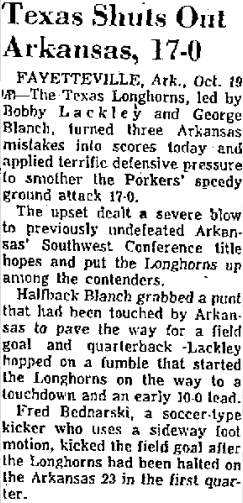If you don’t think the Era of the Tight End is upon us, consider this: When Julius Thomas caught three touchdown passes in the Broncos’ Week 1 win over the Colts, it was the 18th time in the 2000s a tight end had done that. What’s more, we’re talking about 16 different tight ends, everybody from Mark Campbell (Bills, 2004) to Greg Olsen (Bears, 2009) to Dante Rosario (Chargers, 2012 — his only three scores that season). The only ones who’ve had two of these games (playoffs included) are the Patriots’ Rob Gronkowski and the Chargers’ Antonio Gates.
Thomas also had 104 yards receiving. Three TD grabs and 100 receiving yards in a game aren’t so common for a tight end. In fact, there have been only 10 such performances in the last 25 years. The roll:
TIGHT ENDS WITH 3 TD CATCHES, 100 RECEIVING YARDS IN A GAME SINCE 1989
| Date | Tight end, Team | Opponent | Rec | Yds | TD | |
|---|---|---|---|---|---|---|
| 9-7-14 | Julius Thomas, Broncos | Colts | 7 | 104 | 3 | |
| 1-14-12* | Rob Gronkowski, Patriots | Broncos | 10 | 145 | 3 | |
| 10-22-06 | Alge Crumpler, Falcons | Steelers | 6 | 117 | 3 | |
| 10-30-05 | Antonio Gates, Chargers | Chiefs | 10 | 145 | 3 | |
| 11-16-03 | Shannon Sharpe, Broncos | Chargers | 7 | 101 | 3 | |
| 9-29-02 | Tony Gonzalez, Chiefs | Dolphins | 7 | 140 | 3 | |
| 12-14-97 | Ken Dilger, Colts | Dolphins | 5 | 100 | 3 | |
| 10-6-96 | Shannon Sharpe, Broncos | Chargers | 13 | 153 | 3 | |
| 10-3-93 | Johnny Mitchell, Jets | Eagles | 7 | 146 | 3 | |
| 9-17-89 | Keith Jackson, Eagles | Redskins | 12 | 126 | 3 |
*playoffs
For sheer economy, you can’t do much better than Lions tight end Joseph Fauria did last season against the Browns: three catches, 34 yards, three touchdowns. The only TEs since the merger who’ve topped him — that is, scored three times in fewer yards – are, well, see for yourself:
FEWEST RECEIVING YARDS IN A GAME FOR A TIGHT END WITH 3 TD CATCHES
| Date | Tight end,Team | Opponent | Rec | Yds | TD |
|---|---|---|---|---|---|
| 10-12-75 | Mack Alston, Oilers | Browns | 3 | 22 | 3 |
| 10-14-90 | Eric Green, Steelers | Broncos | 4 | 28 | 3 |
| 10-13-13 | Joseph Fauria, Lions | Browns | 3 | 34 | 3 |
| 11-21-04 | Mark Campbell, Bills | Rams | 4 | 37 | 3 |
| 12-18-88 | Damone Johnson, Rams | 49ers | 4 | 42 | 3 |
I’ll say it for you: Stats don’t get any more obscure than that.
Source: pro-football-reference.com

